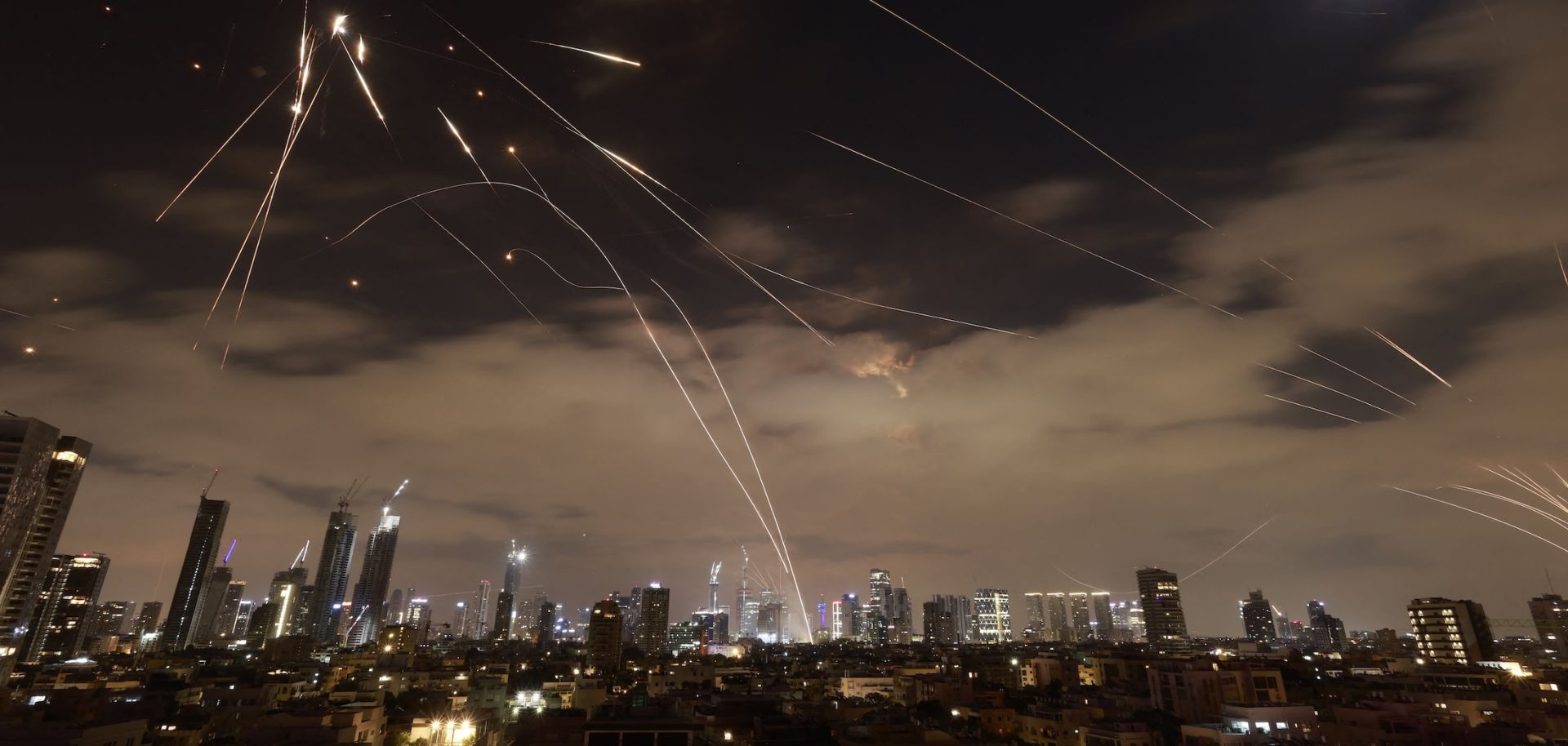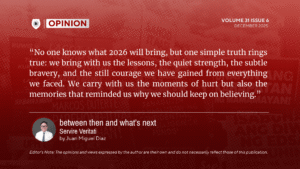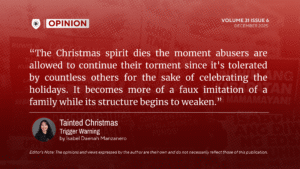By Luis Gabriel Santiago | June 30, 2025
Iran-Israel tensions remain despite talks of “total ceasefire”
DESPITE the “complete” truce mediated by US President Donald J. Trump between the hostilities of Israel and Iran, which posits halting all forms of military operations, unprecedented attacks from both parties continued hours after, violating the ceasefire agreement. President Trump still claims that the ceasefire is holding, but official peace talks between the two parties have yet to take place.
The Iran-Israel conflict, coined the “12-Day War,” began last June 13 as the Israel Defense Forces (IDF) launched “Operation Rising Lion,” attacking key Iranian military infrastructure aimed at weakening both their military and nuclear capacity.
The attack resulted in the death of top military leaders of Iran, including Gen. Hossein Salami, commander of the Islamic Revolutionary Guard Corps, and Gen. Mohammad Bagheri, armed forces chief of staff.
That same day, the Islamic Revolutionary Guard Corps (IRGC) retaliated, sending missiles to Israeli military and air bases.
The conflict spans years in the making, as covert operations have ensued in the past, with this direct missile attack marking and confirming a drastic turning point in the conflict between the two countries, as reported by the National Public Radio (NPR).
Iran promised retaliation against both Israeli and US forces situated across the Middle East, with President Trump answering back that “the full strength and might of the US Armed Forces will come down on you at levels never seen before."
In the following days, attacks from both Iranian and Israeli militaries continued. Missiles were launched daily over the airspace, confirming strikes on energy, oil, and even urban buildings, with growing worries of radiation leakage that remain monitored by the International Atomic Energy Agency (IAEA).
Schools were shut down, and the citizens were forced to evacuate their homes, but the missiles continued to strike.
On June 22, the United States bombed three nuclear sites in Iran, compelled to intervene in the war as both Israel and President Trump stressed that “Iran should not have nuclear weapons.” The attack, “Operation Midnight Hammer,” aimed to impede Iran’s nuclear program and prevent it from weaponizing its stockpiled Uranium.
This use of military force by the United States urged Iran to direct missiles toward the US Al Udeid Air Base in Qatar the following day. While the attempt was successfully intercepted by American air defense systems and there were no reports of casualties after the attack, this marked the first official clash between the United States and Iran in years.
According to CNN, around 627 Iranians have been killed ever since Israel mounted its attacks on Iran last June 13, with figures shared by the Iranian Health Ministry. 86% of victim deaths were at the scene of the missile impact, while the remaining 14% were due to injuries related to the attack. The attacks caused considerable damage to residential areas despite targeting mainly high-profile military targets.
With fears of continued escalation and the death toll increasing, attempts at mediation between the two countries have been in talks, with President Trump announcing a “complete” ceasefire on a live CNN broadcast on June 23.
Despite this, an Israeli missile attack struck central Tehran around 3:00 a.m. local time, hours before the ceasefire officially began to take effect at 7:00 a.m. on June 24. Iran fires back, directly hitting Be’er Sheva and resulting in four confirmed casualties, seven minutes before the ceasefire starts.
Shortly after the ceasefire deadline, Iran launched missiles toward Israeli territory, with both attempts either intercepted or landing in open areas.
Israeli Defense Minister Israel Katz had orders to retaliate in response to accusations that Iran was “violating the ceasefire.” Abdolrahim Mousavi, chief of Iran’s Armed Forces General Staff, denied such allegations and claimed the statements were false.
After a direct call with President Trump, Israeli Prime Minister Benjamin Netanyahu officially gave the order to stand down and return to base.
NATO Secretary General, Mark Rutte, addressed that the US “has to take action when it is necessary” to ensure that peace is upheld, considering that they are 25% of the world’s economy and the strongest military power present.
Both Iran and Israel have declared “victory” against the other following the strikes before the ceasefire agreement.. In his first speech after the ceasefire, the Iranian Supreme Leader, Ayatollah Ali Khamenei, directed a message to President Trump, that “Iran will never surrender”. He claims that the reported damages incurred by Iran were exaggerated, but gives no more details following that.
As of June 26, CIA Director John Ratcliffe has released a statement that confirms Iran’s nuclear program has been severely damaged and that key nuclear facilities were destroyed albeit questions remain if the enriched uranimum supply, a vital component of nuclear weapons, of the Iranians was fully destroyed, as damage assessments have displayed limited data.
In recent reports of the IAEA, they report that Iran still refuses to answer questions surrounding its nuclear program and their goals. Even though Iran insisted their program was of no threat, they have continued to enrich uranium near weapon-level grade.
IAEA Director Rafael Grossi claims that resuming their operations on Iranian soil is “more than possible, it's essential.” However, the Islamic Consultative Assembly has proposed a bill to suspend any form of cooperation with the IAEA, with the said bill a few steps away from becoming law.
The final decisions of diplomacy between the warring countries have yet to be released, while the surrounding territories and powers grow weary of the conflict. Tensions remain high amid the supposed “ceasefire” as no formal agreement between the involved nations has been negotiated.`
Volume 30 | Issue 5




